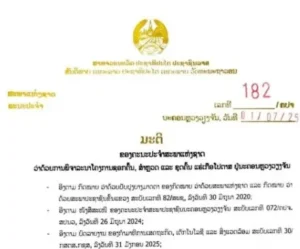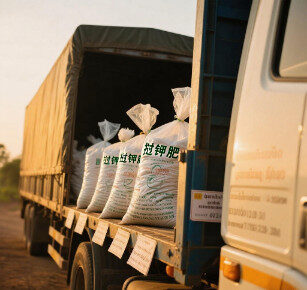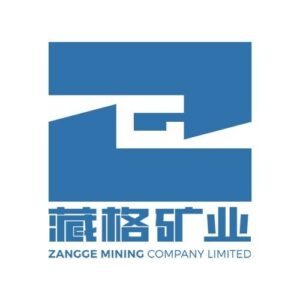On July 1, 2025, Laos’ National Assembly Standing Committee issued Resolution No. 182, ordering an immediate suspension of all potash exploration, survey, and mining projects in the capital, Vientiane. The decision, framed as a response to a sinkhole incident in Xaythany District, has sent shockwaves through the global potash market, particularly affecting Chinese mining firms that have heavily invested in Laos’ potassium resources.
With no compensation promised for halted projects, the move threatens to sink over 1 billion yuan (US$140 million) in Chinese investments, disrupt China’s potassium supply chain, and raise concerns about policy stability in Laos’ mining sector.

Key Takeaways
✅ Sudden Policy Shift: Laos abruptly suspends all potash projects in Vientiane, citing geological risks, but critics question the scientific basis and legal validity of the decision.
✅ Chinese Firms Hit Hard: Zangge Mining (藏格矿业) faces 100 million yuan in sunk costs, while Yunnan Yuntianhua (云天化) may lose 1 billion yuan in planned investments.
✅ Global Potash Market Implications: The suspension comes just as potash prices surge (CFR $346/ton, +26.74% YoY), raising suspicions of geopolitical maneuvering.
✅ China’s Potassium Security at Risk: With two-thirds of China’s potash imports dependent on foreign suppliers, the disruption could further strain domestic fertilizer supplies.
1. Why Did Laos Suspend Potash Projects?
A. The Immediate Trigger: The Xaythany Sinkhole Incident
On June 1, 2025, a sudden ground collapse in Tongmang Village, Xaythany District, damaged homes and triggered public outcry. While no direct link to potash mining was proven, the Lao government swiftly cited “geological safety concerns” to justify the sweeping ban.
B. Legal and Policy Controversies
The resolution has drawn criticism for:
-
Lack of Due Process: The decision bypassed Laos’ Ministry of Natural Resources and Environment, raising constitutional concerns.
-
No Compensation: Violates Laos’ Investment Promotion Law (Article 22), which mandates fair compensation for revoked projects.
-
Abrupt Policy Reversal: Contradicts Laos’ 2017-2024 pro-mining stance, which encouraged foreign investment in potash.
Industry Reaction:
“This isn’t about safety—it’s about political maneuvering. The sinkhole wasn’t even in an active mining zone.”
— Lao International Engineering Consultancy
2. Chinese Companies in the Crosshairs
A. Directly Affected Firms
| Company | Project Impact | Financial Loss | Next Steps |
|---|---|---|---|
| Zangge Mining | Vientiane Basin (158 km², 100M-ton project) | ¥100M (exploration costs) | Shifts focus to copper & lithium1 |
| Yunnan Yuntianhua | 50M-ton/year Vientiane project (halted) | ¥1B+ (potential write-down) | May pivot to Ganmeng Province1 |
| China Hydropower | Early-stage exploration | Undisclosed | Re-evaluating Laos investments1 |
B. Unaffected Players (Ganmeng Province Operations)
-
Asia-Potash International (亚钾国际): 500M-ton/year capacity by 2025 (Ganmeng, 380km from Vientiane).
-
Dongfang Tieta (东方铁塔): 300M-ton/year expansion (Ganmeng).
“Our operations in Ganmeng are unaffected. We remain committed to Laos’ potash sector.”
— Asia-Potash International
3. Broader Implications for China’s Potassium Supply
A. China’s Heavy Reliance on Potash Imports
-
Self-sufficiency rate: <33% (vs. near-full sufficiency in nitrogen/phosphorus).
-
2024 Top Import Sources:
-
Russia (35%)
-
Belarus (28%)
-
Canada (19%)
-
Laos (9.3%).
-
B. Why Laos Matters
-
USGS Data (2025): Laos now holds 10B tons of potash reserves (2nd globally).
-
Strategic Proximity: Cheaper logistics vs. Canada/Russia.
-
China’s Backup Plan? If Laos becomes unreliable, Siberian or Middle Eastern suppliers may gain leverage.
4. Market Reactions & Future Outlook
A. Potash Prices Surge Amid Uncertainty
-
June 2025 Contract Price: $346/ton (CFR, +26.74% YoY).
-
Chinese Domestic Price: $445/ton (June 2025).
B. Will Chinese Firms Exit Laos?
-
Short-term: Some may shift to Ganmeng (less regulated).
-
Long-term: If policy instability persists, African (Ethiopia, Congo) or South American (Brazil) projects could attract Chinese capital.
Conclusion: A Wake-Up Call for China’s Potassium Strategy
Laos’ sudden potash ban exposes three critical risks for China:
-
Over-reliance on geopolitically fragile suppliers (Russia/Belarus/Laos).
-
Lack of domestic reserves (only 6% of global potash deposits).
-
Policy unpredictability in resource-rich nations.
The Way Forward?
-
Accelerate overseas mining diversification (Africa, Latin America).
-
Boost domestic R&D in synthetic potash alternatives.
-
Leverage diplomatic channels to negotiate Laos project reinstatements.
For now, ¥100M in Chinese investments hang in the balance—and the fallout could reshape global potash trade for years to come.









